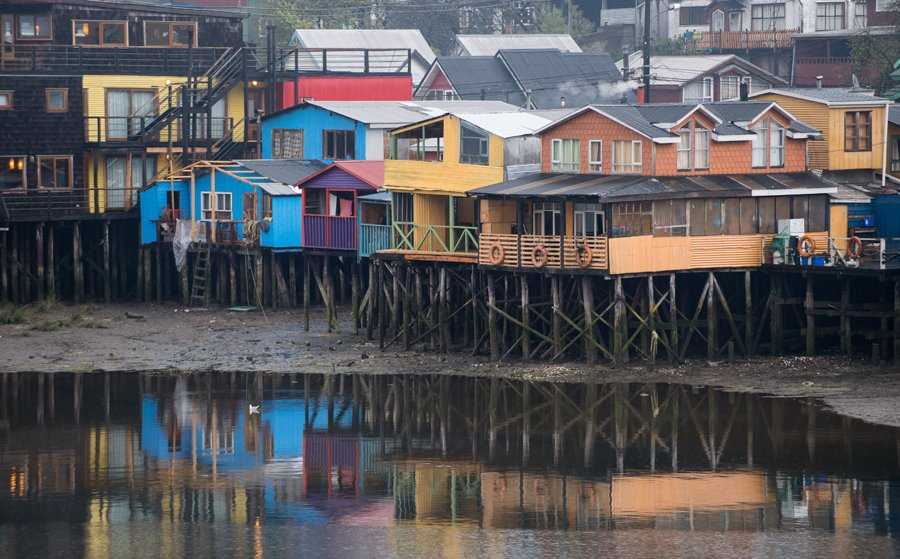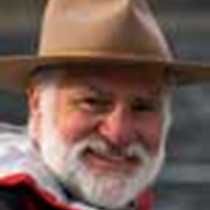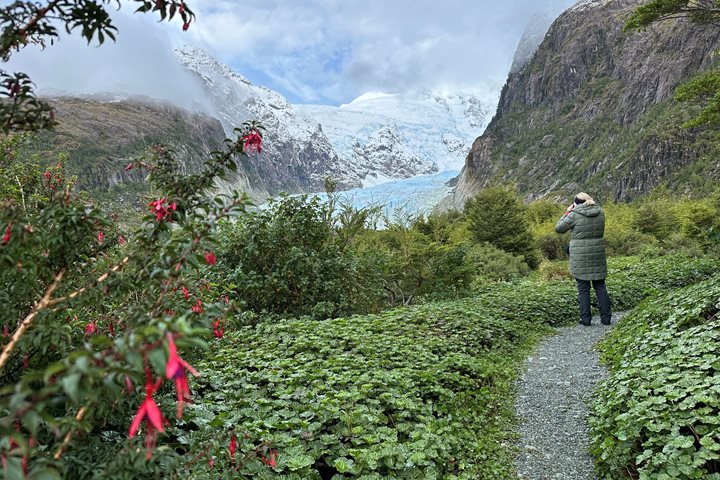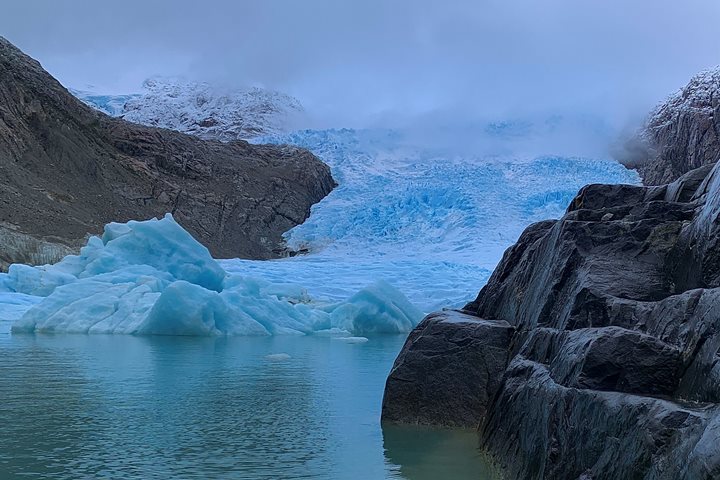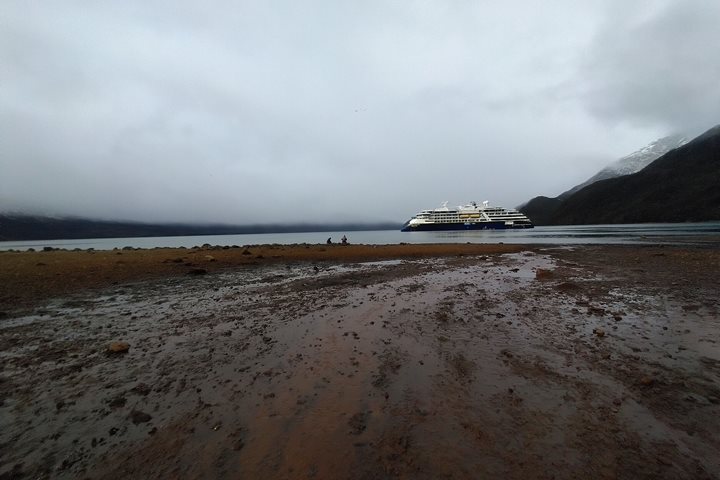The National Geographic Explorer quietly made her way into Castro harbor and was tied up at the pier by the time we received our early morning wake up call. After a good breakfast, maybe taken a little too quick, we headed, early, off the ship under a downpour to our respective buses and off to our respective adventures.
The choices today are a cultural tour of parts of Castro and then to a neighboring island called Quinchao, or a visit to Chiloé National Park, with opportunities to walk in native forests and catch search for some of the local wildlife.
The visit to the National Park brought opportunities to learn more about the rich flora in this region, particularly the wide variety of trees to be found. There were also a number of birds spotted along the way; particularly interesting were the slender-billed parakeets and some waterfowl species. The soft ground underfoot was a reminder of how much rainfall this area receives.
For those who opted for the cultural tour our first stop was an opportunity to see the palafito houses along the coastline. These houses are built on wooden stilts as the tides vary between 9 to 16 feet. The front parts of these houses give on to the streets and just look like normal houses. However the back of the houses look out to the sea and the stilts compensate for the tides and also allow the locals to venture out on fishing trips as well as going out to collect intertidal animals. They are painted in varying bright colors and the still waters cause some lovely reflections. As we drive through Castro and on our way to Dalcahue we passed through rich pasture land with dairy cows quietly grazing in the fields. There are also “Ulmo” trees in flower and we learn about the delicious scented honey that the honeybees make from them. In Dalcahue we board a small ferry for the short crossing over to Quinchao Island and to the town of Achao. We head for the town square and visit one of the many entirely wooden churches that are so characteristic to the Chiloé Archipelago. Some of these remarkable structures are 300 years old and because of the knowledge of the skilled local carpenters have been able to withstand the many earth tremors and earthquakes that have taken place during those many years. From there we visit a quaint local market in the process of getting ready for the new day. We are able to see some of the local vegetables, cheeses and of course a variety of foods taken from the sea.
Back in Dalcahue we visit another church and a very colorful artisan craft fare with a variety of wood and wool products on display. We are taken by the warmth and friendliness of the local people.
Our last visit is the impressive church in Castro, the capital of Chiloé Island, and its unique architecture. It is more European in style and is also a lot more recent, having being completed in the early years of the previous century.
Back on the ship we enjoy our lunch and before tea we have an opportunity to meet the staff. This is followed with a presentation on Pumalín Park, our destination for the next day.
Under sail again we head out of Castro and slowly make our way east towards the mainland of Chile. Along the way we are impressed with the many fish farms dotted about. There are mussel and clam farms as well as various species of fish in the characteristic cages.
Our busy day is capped off with our Captain’s welcome cocktail and dinner. It is an opportunity to learn more about our home from home and meet some of the senior officers.
After dinner we gladly toddle off to bed, delighted with the first day of our Patagonian adventure but also tired; and tomorrow is another early start!
